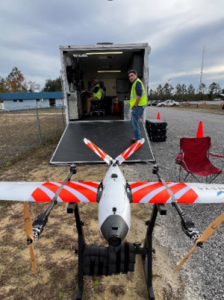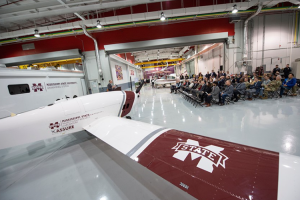Innovation has been at the heart of TVA’s drone activities since the inception of its Unmanned Aircraft Systems (UAS) team in 2019, but only recent events have enabled the team to address one long-time question: Just how far away can you fly that thing?
“People come up to us all the time and ask that,” laughs Walter Hodges, UAS team manager. “Now we can provide an answer.”
On March 8, TVA received its first Beyond Visual Line of Sight (BVLOS) waiver from the Federal Aviation Administration. This key milestone now allows certain drone operations to extend up to 10 miles away from home base, also known as the Ground Control Station. In the coming months, Aviation Services will begin operating the Censys Sentaero V across the Valley region.
But that isn’t the only development taking place. Later this month, in partnership with Mississippi State Raspet Flight Research Laboratory, TVA will submit documentation to the FAA to allow for routine BVLOS operation of large aircraft, known in the industry as Group 3 & 4 UAS.
These aircraft can weigh thousands of pounds and have flight endurance ratings of over 20 hours. Capable of carrying sensor payloads similar to those found on TVA’s helicopter fleet, the large UAS represent a major step forward in safety, efficiency and data collection.
“The Group 3 & 4 UAS allow TVA to scale our enterprise-wide remote sensing strategy in a safe, deliberate manner,” said Walter. A decision from the FAA is expected this summer.
Fleet Change on the Horizon
In addition to flying drones out of sight, TVA is also in the process of overhauling its existing drone fleet. At the end of 2023, Congress passed the American Security Drone Act (ASDA) as a part of the larger National Defense Authorization Act. A key takeaway for TVA is that, as a federal entity, it can no longer purchase drones from covered foreign entities—mainly manufacturers from China. In alignment with the ASDA, the use of TVA purchasing cards to buy drones of any origin is no longer allowed.
Drone fleet replacement efforts have already begun, with the migration to new aircraft scheduled to conclude at the end of 2025.


